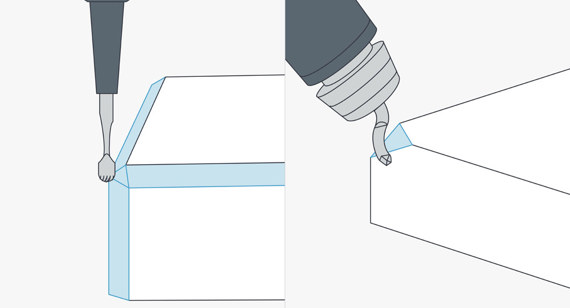Metal joining is a critical process in manufacturing, often used to create strong, durable connections between components. From automotive industries to aerospace engineering, high-volume metal joining is integral across numerous sectors. However, the associated costs can quickly escalate, impacting profitability and production efficiency.
This blog explores innovative solutions that can help engineers, manufacturers, and metalworking professionals reduce costs while maintaining high-quality results in metal joining processes. We’ll cover modern technologies, material choices, and process improvements that can lead to sustainable cost management.
The Challenges of High-Volume Metal Joining
High-volume production introduces unique challenges, such as managing material costs, ensuring process efficiency, and maintaining consistent quality. Common issues include excessive power consumption, the need for precise machinery, and material waste. Additionally, high-quality metal joining often requires highly skilled labor, further driving up costs.
To address these challenges, metalworking professionals and manufacturers are continuously innovating, adopting cutting-edge technologies and strategies that streamline operations and reduce inefficiencies.
Cost-Effective Solutions for Metal Joining
1. Adopting Advanced Welding Technologies
Modern welding technologies such as laser welding and friction stir welding have transformed the metal joining landscape.
- Laser Welding utilizes concentrated beams of light to fuse materials with precision. It reduces material waste and speeds up production. Though the initial investment may be high, laser welding minimizes operating costs over time through efficiency.
- Friction Stir Welding (FSW) is another cost-efficient method, particularly for lightweight materials like aluminum. FSW eliminates the need for filler materials while ensuring strong joints and reducing waste.
For manufacturers handling high-volume projects, these advanced technologies can significantly lower overall costs.
2. Optimizing Material Selection
Using the right materials for metal joining is another key area for reducing costs. Materials like aluminum and high-strength steel alloys are lightweight, cost-efficient, and durable. Proper selection not only lowers material expenses but also reduces energy required for processes such as welding or brazing.
Additionally, repurposing scrap metal or using recycled materials in non-critical components can lower costs without compromising quality. Careful material audits are vital to ensure economical yet efficient choices.
3. Implementing Automation Systems
Automation has revolutionized many industries, and metal joining is no exception. Introducing robotics and advanced machine learning for repetitive tasks can enhance accuracy, reduce labor, and downtime. Automated welding or joining systems minimize human error and consistently deliver high-quality results.
For businesses aiming to manage costs in high-volume metal production, automation offers substantial long-term savings.
4. Utilizing Adhesive Bonding
Adhesive bonding is gaining popularity as a cost-effective and versatile metal joining technique. Unlike traditional welding, adhesive bonding does not require high temperatures, reducing power consumption. It also works well with a variety of materials, including dissimilar metals.
This method is ideal for industries like electronics and automotive manufacturing, where reducing thermal stress is critical.
Streamlining Maintenance to Cut Costs
Regular maintenance of equipment used in industrial metal joining processes is crucial to minimizing operational costs. Downtime caused by equipment failures can lead to significant losses in high-volume production. Adopting predictive maintenance and partnering with reliable service providers for industrial electrical maintenance are effective ways to avoid unforeseen expenses. Such practices enhance machine longevity and ensure consistent efficiency.
Innovative Techniques for Reducing Waste
Minimizing material waste is another effective way to save costs in metal joining. Techniques like precision laser cutting and proper joint design help reduce excess material usage. Additionally, reusing byproducts or repurposing scrap from previous processes can cut down costs without affecting output quality.
5. Investing in Employee Training
Proper training ensures metalworking professionals are well-versed in using advanced tools and techniques. Skilled employees operate equipment more efficiently and produce higher-quality results, ultimately reducing the need for rework and additional resources.
6. Energy Efficiency and Cost Management
Metal joining processes often consume significant amounts of energy. Investing in energy-efficient machinery can result in substantial savings. For example, using inverter welding machines, which consume less power than conventional systems, can decrease production costs for manufacturers working on high volumes.
Switching to renewable energy sources, such as solar or wind power, for manufacturing facilities further enhances cost efficiency while contributing to sustainability goals.
The Future of Cost-Effective Metal Joining
The future of metal joining lies in continuous innovation. Additive manufacturing, like 3D printing, is poised to make a significant impact by providing cost-efficient methods of creating complex structures while reducing waste.
Additionally, advancements in AI and data analytics are expected to optimize high-volume metal joining further, offering even smarter and more efficient ways to keep costs in check. Collaboration between engineering teams, manufacturers, and technology providers will be key to realizing these advancements.
Unlock the Potential of Efficient Metal Joining
Cost reduction in high-volume metal joining doesn’t mean compromising on quality or efficiency. By adopting modern technologies, streamlining processes, and making informed materials choices, manufacturers can ensure consistent output at reduced costs.
Whether through welding innovations, automation, or smarter maintenance strategies, the path toward cost-efficient metal joining is achievable with the right approach and expertise.
